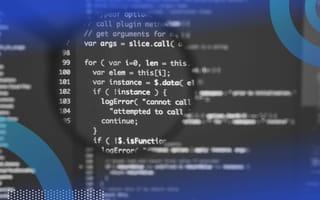Node.js is a powerful, open-source runtime environment that allows developers to build network applications, including web servers. This JavaScript-based program enables JavaScript to run outside the browser, allowing it to power backend logic, APIs and command-line tools. Node.js is unique for its use on both the front and back end alike, providing more versatility for web developers.
How to Install Node.js Through the Basic Installer
Node.js can be installed in several ways — the easiest for most users being through the basic installer provided on the official Node.js website.
How to Install Node.js on Mac and Windows
Installing Node.js is similar for both operating systems. Below are the steps to follow.
1. Download the Installer: Navigate to the download page and select the .pkg installer for macOS or the .msi version for windows.

2. Run the Installer: After completing the download, launch the installer and follow the directions on-screen.

3. Customize the Installation: During the installation you can select the installation path and choose other optional features like installing tools for native modules.

4. Verify the Installation: After the installation is complete verify that it is running. To do so open the Terminal on Mac or Command Prompt on windows and enter: Node-v
Binaries and Docker Images are also available for those who might need them. Developers should install the long-term support (or LTS) version as it’s the most stable. Newer installations of Node.js are available, however, called “nightly builds.” These offer more features but have not been time-tested publicly like the LTS versions. Users should think of these nightly builds as beta releases and proceed accordingly.
How to Install Node.js With Source Code
Node.js is open-source software, which means that anyone — , programmers or laypeople — can view the code, suggest improvements, or even fork the software to create a slightly or radically different version. Installing Node.js via source code is also possible, but because this route requires compiling code it’s only recommended for those with more programming experience who already have the compiling software required.
Those wishing to work with the Node.js source code must first find or create a suitable build.
1. Prepare a C++ compiler
Much of Node.js is written in C/C++, and many of its modules are implemented in these languages. The compiler is necessary for translating computer code into an easy-to-review language.
2. Install Python
Although Python is not necessary for other Node.js installation options, it is critical for the source code-based option. Node.js has been built with GYP, a cross-platform built program written in the Python language. Since multiple Python scripts appear here, Python is necessary for source code operations.
3. Download the source code from the Node.js website.
The source code appears in a .tar.gz file. The website provides access to all editions of Node.js, giving users the option to download whatever source codes they prefer.
4. Launch the /CONFIGURE command and then launch MAKE
5. Test the compiled program with make test
6. Enter make install to install the source code program.
7. Enter node –version to check what version of Node.js is running.
The process lets you know the specific version of Node.js that works here
Installing Node.js through the source code is only recommended for people with more technical experience. Since the source code is more complex, users might require additional support in reading the content. This option is also slower than any other item.
Advantages of Node.js
Node.js offers a host of powerful and unique features.
1. Cross-Platform Compatibility
Node.js runs across multiple platforms, making it a good choice for developing both desktop and mobile applications.
2. Full-Stack Development Support
Node.js enables developers to use JavaScript for front-end and back-end development, streamlining workflows and simplifying maintenance as a single language handles both UI and server-side logic.
3. Scalable Single-Thread Architecture
Node.js uses a single-threaded, event-driven model architecture. This minimizes execution times and enables applications to efficiently scale by allowing multiple users to share system resources.
4. Asynchronous Processing
Node.js supports blocking and non-blocking operations. Non-blocking calls allow multiple processes to run simultaneously thus improving performance and responsiveness.
5. Strong Community and Documentation Support
Node.js offers abundant support. The official Node.js website provides thorough tutorials and community members provide ongoing support through forums and online groups.
Frequently Asked Questions
What is Node.js used for?
Node.js is primarily used for building server-side applications and APIs using JavaScript.
What is npm, and do I need it?
npm stands for Node Package Manager. It is used to install, manage and share code packages known as modules or dependencies. Node.js can run without npm but it is recommended to install npm.
How can I verify my Node.js installation?
To verify Node.js installed correctly, open a Terminal or Command Line window (depending on your operating system) and use the Node version shorthand node -v. This will check which version of Node.js is installed on your machine. If none is installed, it will return an error message.




